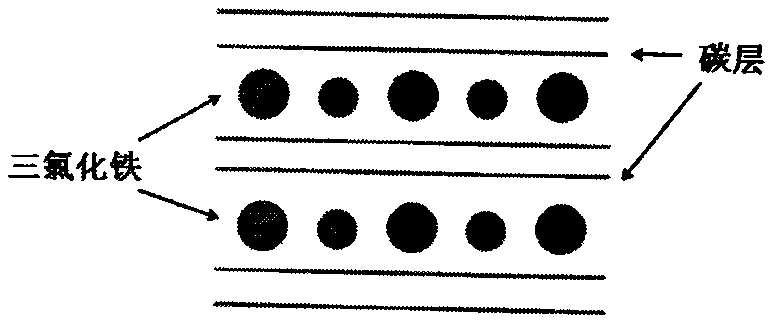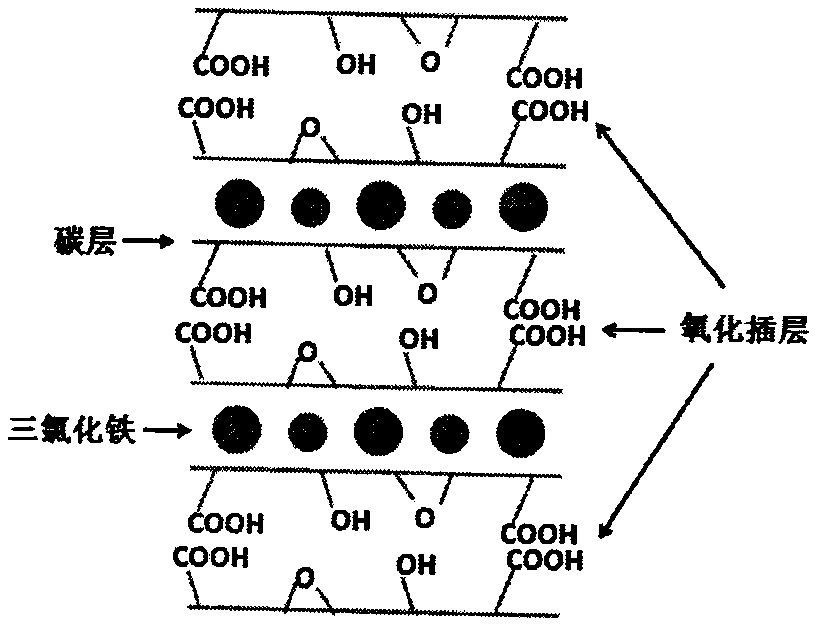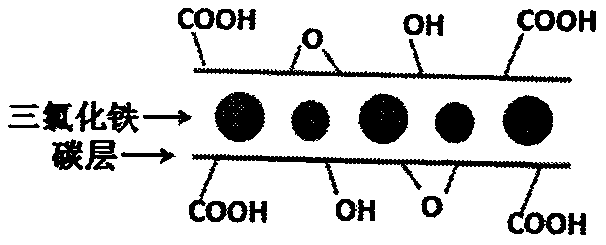Preparation method of graphene-coated atomic force microscope probe
An atomic force microscope and graphene coating technology, which is applied in scanning probe technology, scanning probe microscopy, measuring devices, etc., can solve the problems of many impurities in the coating of the tip of the needle, inability to large-scale preparation, and high production costs, and achieve The effect of reducing electrical conductivity and mechanical properties, reducing the amount of oxidation, and avoiding pollution
- Summary
- Abstract
- Description
- Claims
- Application Information
AI Technical Summary
Problems solved by technology
Method used
Image
Examples
Embodiment 1
[0030] (1) Mix 300mg of anhydrous ferric chloride and 60mg of expanded graphite evenly, vacuumize, seal in a 50mL glass bottle, and heat at 400°C for 4h to prepare a pure second-order graphite intercalation compound. Dissolve the graphite intercalation compound in Dilute hydrochloric acid solution, filter and dry.
[0031] (2) The graphite intercalation compound was added into a mixed solution of 20 mL of concentrated sulfuric acid and 10 mL of concentrated nitric acid, stirred in ice water (0° C.) for 0.5 hour, 360 mg of sodium chlorate was put into the solution, and stirred at room temperature for 12 hours, The product was washed by centrifugation.
[0032] (3) The product is added to an excess of hydrogen peroxide with a mass fraction of 30%, and the reaction time is 1 h to obtain single-sided selective graphene oxide.
[0033] (4) Put the single-sided selective hydrophilic graphene material into water, and the single-sided selective hydrophilic graphene material is disper...
Embodiment 2
[0038] (1) Mix 300mg of anhydrous ferric chloride and 60mg of expanded graphite evenly, vacuumize, seal in a 50mL glass bottle, and heat at 400°C for 4h to prepare a pure second-order graphite intercalation compound. Dissolve the graphite intercalation compound in Dilute hydrochloric acid solution, filter and dry.
[0039] (2) The graphite intercalation compound was added into a mixed solution of 20 mL of concentrated sulfuric acid and 10 mL of concentrated nitric acid, stirred in ice water (0° C.) for 0.5 hour, 360 mg of sodium chlorate was put into the solution, and stirred at room temperature for 12 hours, The product was washed by centrifugation.
[0040] (3) The product is added to an excess of hydrogen peroxide with a mass fraction of 30%, and the reaction time is 1 h to obtain single-sided selective graphene oxide.
[0041] (4) Put the single-sided selective hydrophilic graphene material into water, and the single-sided selective hydrophilic graphene material is disper...
PUM
 Login to View More
Login to View More Abstract
Description
Claims
Application Information
 Login to View More
Login to View More - R&D
- Intellectual Property
- Life Sciences
- Materials
- Tech Scout
- Unparalleled Data Quality
- Higher Quality Content
- 60% Fewer Hallucinations
Browse by: Latest US Patents, China's latest patents, Technical Efficacy Thesaurus, Application Domain, Technology Topic, Popular Technical Reports.
© 2025 PatSnap. All rights reserved.Legal|Privacy policy|Modern Slavery Act Transparency Statement|Sitemap|About US| Contact US: help@patsnap.com



